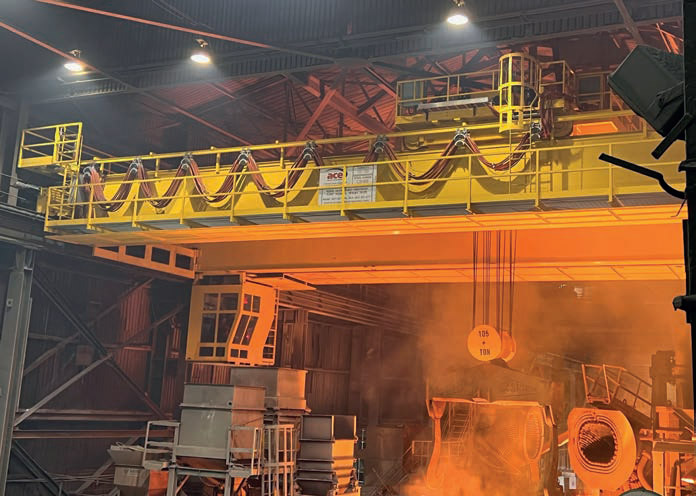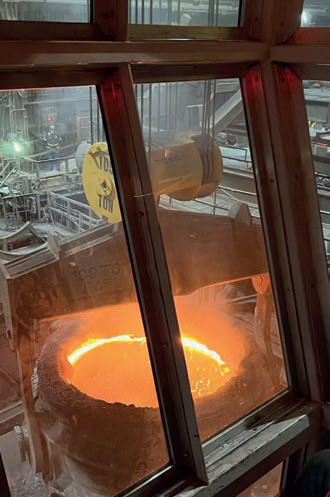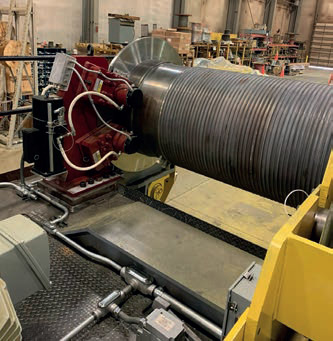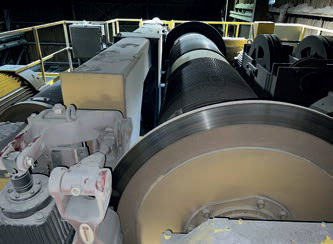Steel Emergency
22 April 2024‘There is still a “concerning lack” of awareness around the importance of installing emergency brakes on cranes in the steel sector, according to experts Joel Cox and Mike Astemborski.
That electric overhead traveling (EOT) crane is missing a crucial piece of safety equipment, and so is that one over there, and so is that one over there—and that’s even before we’ve looked over there at those cranes.
Unfortunately, this is the alarming scenario that we are all too familiar with, when we visit a facility where cranes and hoists are central to critical lifts and everyday production of high-value products.
Even in the super-safe industries like steel, nuclear, and hydro, where decision makers and thought leaders are required to be at the top of their safety game, around the clock, seven days a week, emergency brakes are often overlooked.
In a world of artificial intelligence (AI)—every meeting these days seems to reference chatbots like ChatGPT, developed by OpenAI—automation, and the Internet of Things (IoT), you’d think and hope that we are working in industries that had every safety box ticked and have already taken a step into a new world shaped by state-of-the-art safety technologies and unrivalled industry best practices.
However, we still need to raise awareness of the importance of installing or retrofitting emergency brakes on electric overhead traveling (EOT) cranes, especially in environments where critical lifts are commonplace. Such cranes are everywhere in steel mills. These critical lift cranes can be rated up to 450 tons or more in capacity and lift ladles of molten metal that are poured into casting machines. Staggeringly, 90%—or more—of them are still not fitted with such brakes. It’s a shocking statistic.
Even though we have delivered a great amount of education to the industry, there is still a concerning lack of understanding or implementation here in North America, while in other parts of the world, these emergency stop brakes are a common and expected component of the crane. The U.S. market is still lagging. Therefore, it is worth revisiting this important subject.
What do we mean by emergency brakes?
Put simply, a motor drives a gearbox that rotates a rope drum during lifting or lowering operations. On much of the installed population of overhead cranes, a brake is only connected to the motor shaft or the high-speed shaft of the gearbox (often referred to as the “high speed” brake), meaning it is ahead of a potential point of failure in many instances.
Emergency brakes (often called “low speed” brakes) are connected to the winding drum itself and provide an additional safeguard to keep the load securely suspended in the air on the crane hook.
Emergency brakes should be considered when we are talking about cranes capable of handling loads approaching a rated capacity throughout their life.
Using the MHI’s Crane Manufacturers Association of America (CMAA) crane service classifications, this means Class E and definitely Class F.
Class E crane applications will typically involve a lift nearly every few minutes at or near rated capacity.
Class F cranes, meanwhile, must be capable of handling loads approaching rated capacity continuously under severe service conditions throughout their life. Applications may include custom-designed specialty cranes and those found at steel mills.
Such cranes cost an end user $7-10million these days, meaning there is little excuse not to install a potentially lifesaving addition at a tiny fraction of that cost. It’s not about money; end users are prepared to invest in safety systems, but they need to better understand the risks and products available.
The high capacity of the Dellner Bubenzer SF-series, for example, makes them particularly suitable as secondary emergency brakes on hoist rope drums and on downhill conveyors. Further applications are possible in material handling, requiring power and compact design in either direction of rotation, particularly when replacing the older style band brakes.
SF emergency brakes act directly on the ladle crane's wire rope drum, eliminating any chance of dropping the load in the event of a drivetrain failure on a critical lift crane, such as a hot metal or ladle crane.
Typically, this “low speed” brake is mounted on one end of the drum by the drum flange and grabs a disc that is connected to the flange of the wire rope.
Emergency stop
The SF series, and other emergency brakes, take effect as soon as an overspeed condition, mis-direction condition, or snap shaft condition is detected. The brake holds the wire rope drum, preventing it from lowering. This removes the risk involved with an operator manually pressing an emergency stop button, which would also set the emergency brakes, if present. This is favorable because if the operator was slow to react, the overspeed sensor (usually an encoder) would detect the speed deviation and set the brake.
Programmable encoder technology allows you to pre-set the designed drum speed under normal operation and if that speed does not align with the transmission speed, the system would respond.
It is necessary to stress that, while we have some ongoing projects on 200-ton-plus capacity applications, in the steel sector, we shouldn’t isolate this guidance for larger cranes. Though the large tonnage gets attention or raises eyebrows, emergency stop brakes can also be installed on applications as simple as process or handling cranes, that could be in environments where precious cargo / loads are being handled, and redundancies exist.
It does not have to be a steel, military, or nuclear crane; the conversation should be more readily about: “What do we do if this happens or this gear or bearing fails? How do we get the load down safely to the ground?”
The concerning lack of awareness around the importance of installing emergency brakes on cranes in the steel sector is improving, albeit slowly.
We have seen a slight increase in requests for emergency brakes on new crane builds and have worked with many original equipment manufacturers (OEMs), embracing these braking concepts for the first time.
It’s also true that we have seen a large increase in retrofits, where we are adding the SF brake and disc or a band brake (when there is no headroom to add an additional disc). As end users have discovered, these units are designed to be very compact, meaning few machinery alterations are required to the existing layout of the hoist and trolley area.
Nucor Steel and ArcelorMittal take the lead
Nucor has recently retrofitted some of its ladle and charging cranes at several U.S. locations, and ArcelorMittal has been a pioneer for the technology more globally. It’s always reassuring to see such large brands being proactive versus reactive.
Imagine the catastrophic scene when, say, a gear shaft should fracture, and a load is dropped. All too often a major incident leads to an investigation that exposes the lack of an emergency brake—but then it’s too late. Understandably, many OEMs remain unlikely to propose this cost-adding feature when it could inflate their bid in a competitive tender situation. This means that we must continue to drive these outreach campaigns by pointing to case studies of incidents at the end-user level.
Engineers and plant maintenance workers must be central recipients of this messaging; they can and do listen to their peers in other market sectors.
In the ports sector, where ship-to-shore (STS) cranes are used for loading and unloading containers from ships, the cranes are routinely fitted with emergency stop “low speed” brakes on both the hoist and boom motions, as standard.
In wind, we have seen a huge rise in redundancy in brakes and hydraulics; at some of our offshore wind farms, OEM brands insist on three electric motors for triple redundancy on the hydraulic power unit, if a motor failure was to occur. We know that mining is another sector coming around to a similar way of thinking.
Our phones ring constantly from market managers of different business units and end users. In decades of working in the EOT crane market, emergency brakes are a constant hot topic, especially after an incident has occurred. Hopefully it doesn’t take as long to achieve their ubiquity, at least on Class E and F cranes.’



